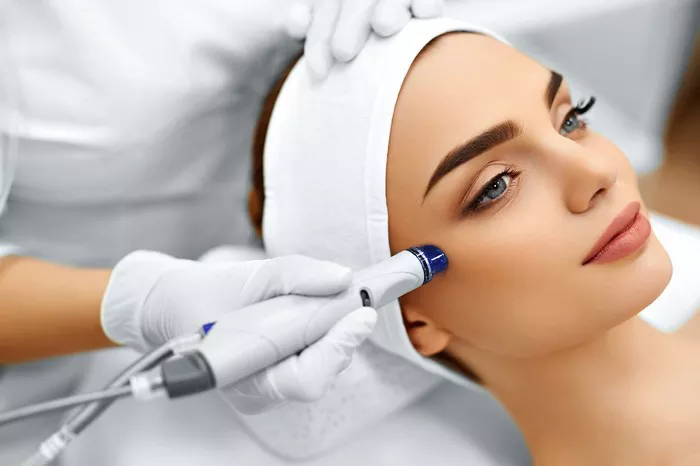Microdermabrasion is a popular cosmetic procedure that aims to improve the texture and appearance of the skin by exfoliating the outermost layer. It is a non-invasive treatment that uses a handheld device to gently remove dead skin cells, revealing a smoother and more radiant complexion. While microdermabrasion is generally considered safe and effective, like any cosmetic procedure, there is a potential for things to go wrong. In this article, we will explore the possible risks and complications associated with microdermabrasion to help you make an informed decision about this treatment.
Understanding Microdermabrasion
Microdermabrasion is a procedure that involves the use of a handheld device that emits fine crystals or uses a diamond-tipped wand to gently exfoliate the outer layer of the skin. This process helps to remove dead skin cells, unclog pores, and stimulate collagen production, resulting in a refreshed and rejuvenated appearance. It is commonly used to address concerns such as fine lines, wrinkles, acne scars, hyperpigmentation, and uneven skin texture.
Possible Risks and Complications
While microdermabrasion is generally considered a safe procedure, there are some risks and potential complications to be aware of:
-
Skin Sensitivity and Irritation
Microdermabrasion can cause temporary skin sensitivity, redness, and irritation immediately after the treatment. These effects usually subside within a few hours to a day. However, individuals with sensitive skin may experience prolonged redness and irritation.
-
Excessive Skin Removal
In rare cases, excessive or aggressive exfoliation during microdermabrasion can lead to the removal of more skin than intended. This can cause prolonged redness, irritation, and discomfort. It is crucial to choose a qualified and experienced provider who can properly assess your skin’s needs and perform the procedure safely.
-
Breakouts and Infections
Microdermabrasion can temporarily disrupt the skin’s protective barrier, making it more susceptible to breakouts and infections. It is essential to keep the treated skin clean and follow post-treatment care instructions provided by your provider to minimize the risk of complications.
-
Hyperpigmentation or Hypopigmentation
In some cases, microdermabrasion can cause temporary changes in skin pigmentation. Hyperpigmentation, or darkening of the skin, may occur due to excessive exfoliation or sun exposure following the treatment. Hypopigmentation, or lightening of the skin, can occur in individuals with darker skin tones. These pigmentary changes are typically temporary and resolve over time, but they can be a concern for some individuals.
-
Eye Injury
Microdermabrasion treatments near the eye area require extra caution. If not performed correctly, the crystals or exfoliating wand can cause injury to the delicate eye tissues, leading to irritation, redness, or even corneal abrasions. It is crucial to protect the eyes during the procedure and choose a skilled practitioner who is experienced in treating the periorbital region.
-
Complications in Certain Skin Conditions
Individuals with certain skin conditions, such as rosacea, eczema, active acne, or skin infections, may be at a higher risk of experiencing adverse effects from microdermabrasion. These conditions can be exacerbated by the procedure, leading to increased redness, irritation, or even infection. It is important to disclose any existing skin conditions to your provider before undergoing microdermabrasion.
-
Unsatisfactory Results
While microdermabrasion can yield noticeable improvements in skin texture and tone, it may not deliver the desired results for everyone. Factors such as the severity of skin concerns, individual skin response, and expectations need to be considered. It is essential to have realistic expectations and discuss them with your provider before the treatment.
Minimizing Risks and Maximizing Benefits
To minimize the risks associated with microdermabrasion and maximize its benefits, consider the following precautions:
- Choose a Qualified Provider: Select a reputable and experienced provider who is trained in performing microdermabrasion. Ensure they have the necessary certifications and a solid understanding of skin anatomy and conditions.
- Pre-treatment Consultation: Schedule a consultation before the procedure to discuss your skin concerns, medical history, and any existing skin conditions. This allows the provider to assess your candidacy for microdermabrasion and customize the treatment according to your specific needs.
- Follow Pre and Post-Treatment Instructions: Adhere to the pre and post-treatment instructions provided by your provider. This may include avoiding sun exposure, discontinuing certain skincare products or medications, and using recommended post-treatment skincare.
- Protect Your Skin: Shield your skin from excessive sun exposure following microdermabrasion. Use a broad-spectrum sunscreen with SPF 30 or higher and wear protective clothing and accessories, such as hats and sunglasses.
- Communicate Any Concerns: If you experience unusual or prolonged redness, irritation, pain, or other concerning symptoms after microdermabrasion, contact your provider immediately. Prompt communication allows them to assess the situation and provide appropriate guidance or intervention.
Conclusion
While microdermabrasion is generally a safe and effective procedure, there is a potential for risks and complications to occur. By choosing a qualified provider, following proper pre and post-treatment care, and communicating any concerns, you can minimize the likelihood of adverse effects and maximize the benefits of microdermabrasion. It is important to have realistic expectations and understand that results may vary depending on individual factors. If you have any doubts or specific concerns, consult with a dermatologist or skincare professional to determine the best course of action for your skin.


